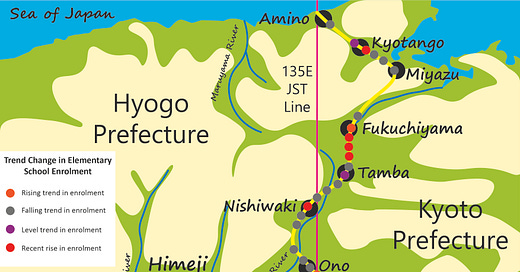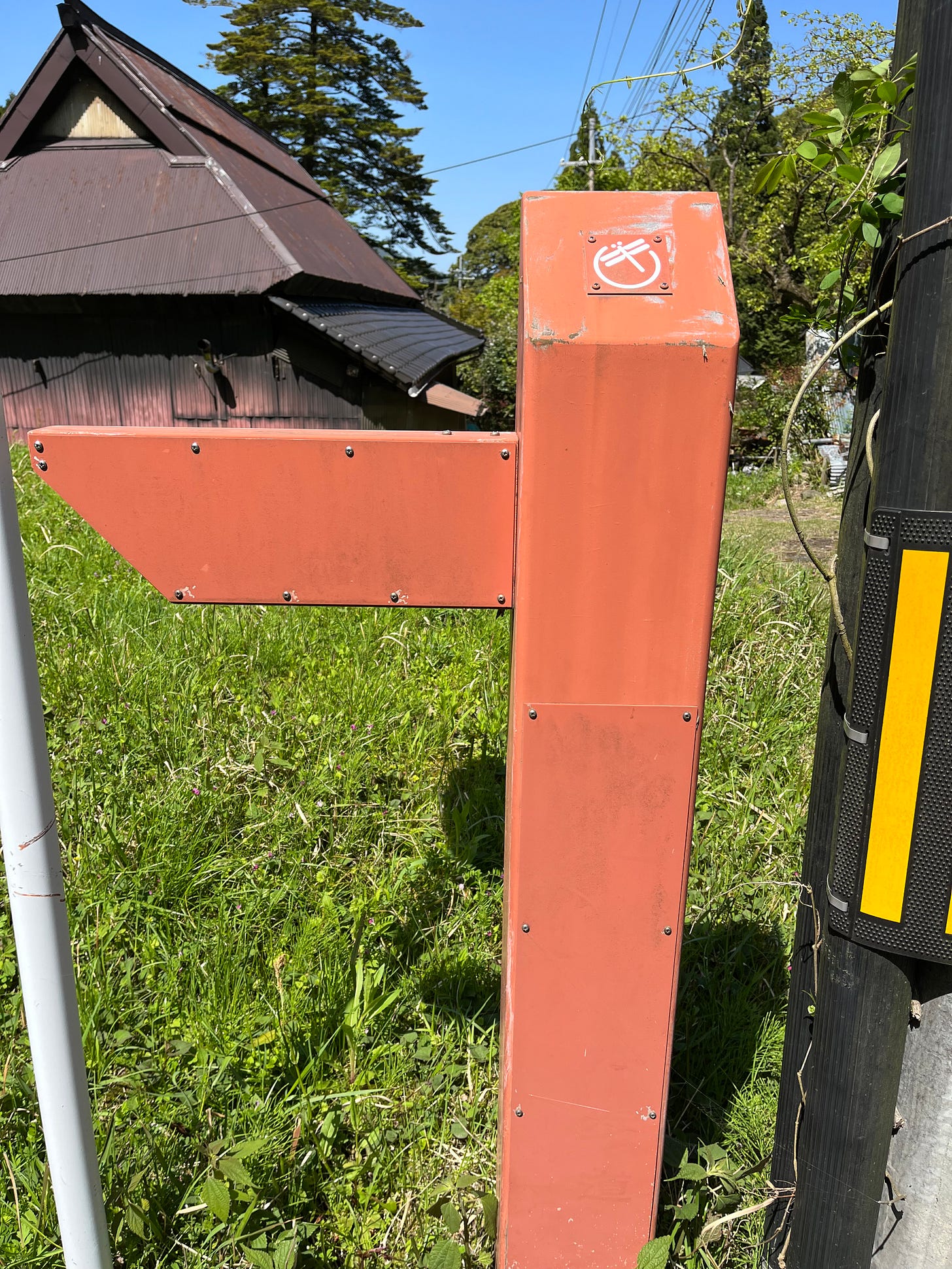Across The Middle of Japan
Conclusions from the JST walk and where next?
So the Japan Standard Time Walk is over. Spread over a few weekends and holidays for the last six months, I have walked all the way across the middle of Japan. Walking is a pleasure in itself, but one thing I wanted to do on this walk was to compare urban and rural Japan. So what did I learn about the difference between the urban coastal sprawl of the Kansai region and the depths of the Japanese countryside far from popular tourist locations?
Population Decline
Japan famously has a declining population. The visible effects of this are patchy - in the quietest villages in the deep inaka, old abandoned houses with trees growing inside them are the most obvious sign of population decline. Other abandoned buildings and the abandoned ski resort I walked through are more the result of changing trends - skiing and playing golf have fallen in popularity over the last few years. The empty restaurants and love hotels show areas bypassed by new expressways and cheaper internal flights rather than the results of a falling population, just as they do along Route One near or on the Tokaido.
There are still lots of factories out in the countryside. If I compare it to my own home town in Cheshire, England, which had two fairly large factories - one producing wallpaper and one pharmaceuticals - and now has none, Japan has done a much better job of retaining industry out in the sticks. To support this industry, it has imported foreign workers to the countryside, where they have taken over old “mansion” blocks.
I checked the school enrolment rates for all of the elementary schools I passed on my walk through the centre of Japan. The main trend, unsurprisingly, is that of a steady fall in student numbers. However, a few schools (mostly in the population-decline-busting Akashi) have managed to buck the trend with a steady increase in enrolment. A few schools seem to have turned the corner on falling numbers since the COVID pandemic with a noticeable uptick in student enrolment in the last few years. These schools are usually in the middle of the countryside but reasonably close to, or in, the larger towns in those areas. Will this trend continue? We’ll have to wait and see. It could be the result of more homeworking opportunities or families wanting more space for their children and a more relaxed way of life.
Please check the map below:
Something that disappointed me on this walk was the decline of the Shizen-Hodo (Nature Path) network in the Hyogo area. I’m guessing (the various websites don’t say) that this network of routes around the Kansai area was started around ten years ago. Parts of my walk coincided with parts of this network of paths that stretch across the whole Kansai area. Unfortunately, they haven’t been maintained. Parts of the routes that are on roads are still fine, but the Miyazu Old Road sections in the forests above Miyazu had frequently been swept away by rivers making navigation difficult. To compound this, the neat brown signposts that ten years ago must have looked wonderful, were now so faded as to be unreadable. The great thing about these nature paths is that they pass through a variety of landscapes rather than endless forest as the more famous trails such as the Kumano Kodo pilgrimage route. They’re well worth resurrecting.
Oh sign, what did you say?
What’s next?
I have some time off work at the end of July, so despite being the height of Japanese summer, I plan to complete the Tokaido walk. It’s taken me about eight days to walk half way to Tokyo, so hopefully it’ll take about another eight days to walk the rest of it. In the meantime, I will walk around the Inland Sea, starting from my hometown of Kobe. Some new museums have opened, so I hope to use these to give me an idea of the historical background of the Kobe area, especially those areas right on the coast.
Please join me on these walks!







Thanks for this series. Looking forward to reading your next adventures.
(if you are out of ideas, a relatively short and interesting walk, one boat ride from Kobe, is the Shodoshima Pilgrimage)